




| Common Stonechat (Saxicola torquatus (Linnaeus, 1766)) |





|
|
Scientific name: Saxicola torquatus (Linnaeus, 1766) Common name: Common Stonechat French name: Tarier pâtre Order: Passeriformes Family: Muscicapidae Size: Body size : 12 to 13 cm; Wingspan : 18 to 21 cm; Weight : 14 to 17 g. Habitat: Meadows, fallow lands, moor lands, bush areas. Food: Mainly insects detected from a high perch. It can catch insects in flight. It also feeds on larvae, spiders and worms. Nesting: Sedentary Common Stonechats live in pairs all year long. The female builds a cup-shaped nest, on the ground, under low vegetation, with an entrance tunnel. There are 2 or 3 broods of 5 to 6 eggs per year. Migration: Partially migratory. European birds overwinter in western areas or in the Mediterranean Basin. Asian birds overwinter in India or in south-east Asia. Geographic area: Europe, Asia, Africa, North America. |
Males have a black head and a black throat with a white half-collar on the sides of the neck. The chest is a red-orange colour. The tail is black and the rump is pale. The wings are dark with a white mark at the base. This white mark is mainly visible in flight. Females have a paler upper side and a paler head than males. The half-collar is less visible. In winter, males are similar to females. There are many sub-species showing variations in colour and size. |
| [To know more about the Common Stonechat] [Next picture] [Top] |
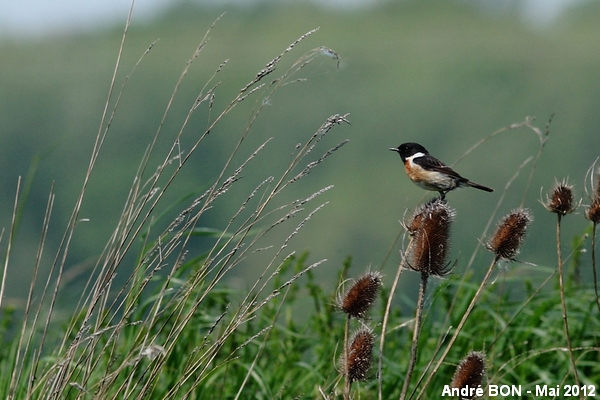
|
Here is one male with its typical plumage. |
| [To know more about the Common Stonechat] [Next picture] [Previous picture] [Top] |
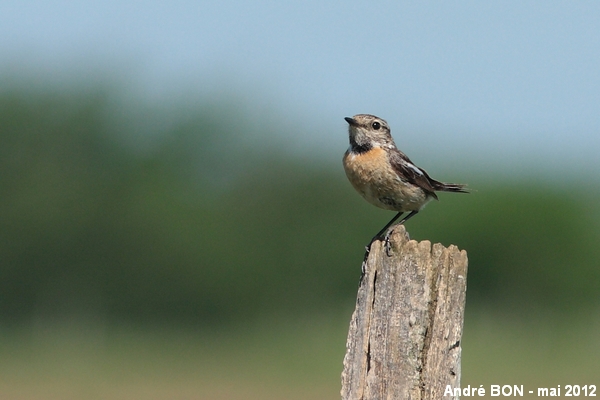
|
Each time I am back in may native region of the Basse vallée du Doubs, I go for a drive along country lanes and I can see a lot of birds perched on fence poles. Here is a short list: Common Stonechat, Western Yellow Wagtail, Corn Bunting, Yellowhammer, Red-backed shrike, Common buzzard, Rook, Northern wheatear, Common starling. |
| [To know more about the Common Stonechat] [Next picture] [Previous picture] [Top] |
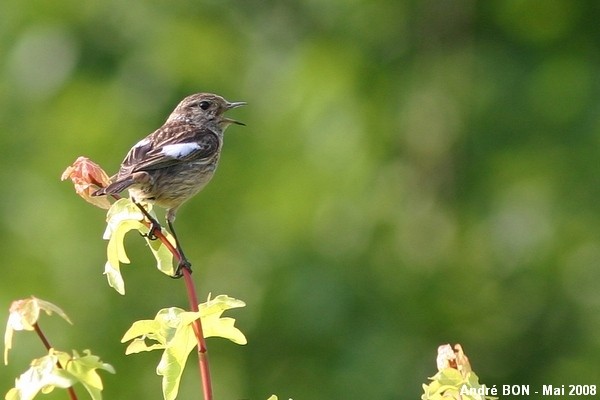
|
Common Stonechats are easy subjects to photograph as they are always used to perching high. |
| [To know more about the Common Stonechat] [Next picture] [Previous picture] [Top] |
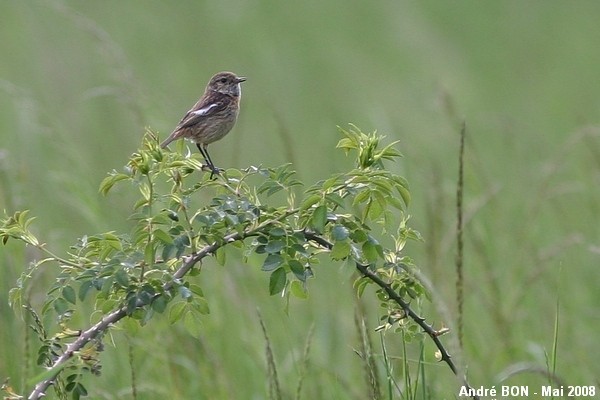
|
I have not been able to get very close to Stonechats but they never flew away very far. |
| [To know more about the Common Stonechat] [Previous picture] [Top] |
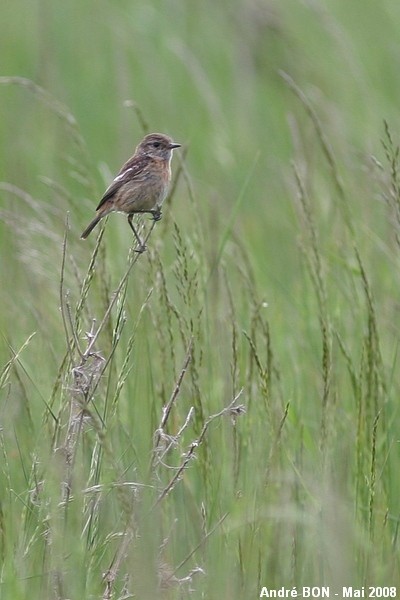
|
A perch among the high grasses is an ideal spot for insect chasing. |